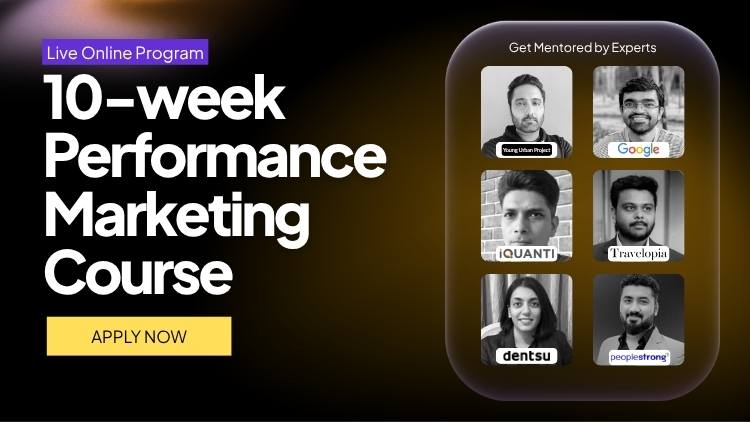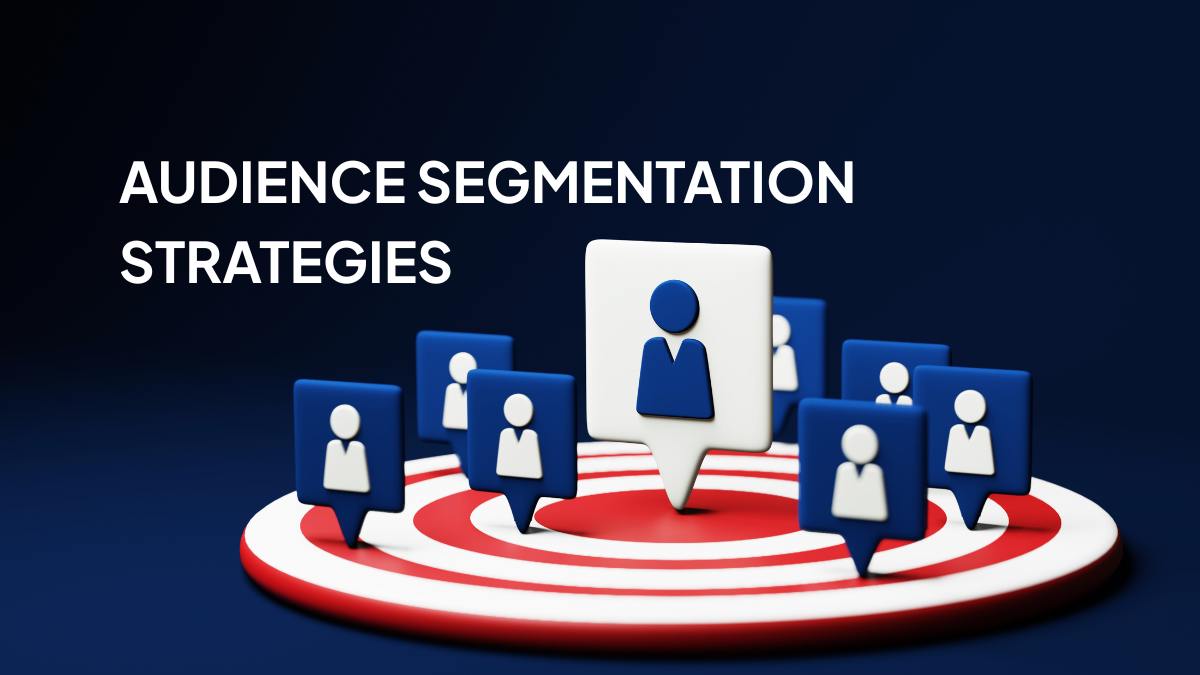Okay, so let’s get into something that’s low-key a game-changer in marketing… but still weirdly underused: audience segmentation.
If you’ve ever blasted out an email or run ads and felt like… “Ugh, why is this not converting?”, it might be because you’re trying to talk to everyone the same way. Which is kinda like trying to sell both Birkin bags and flip-flops using the same Instagram reel. Just doesn’t click.
What Even is Audience Segmentation?
At the simplest level: it’s splitting your audience into smaller groups based on shared stuff, like age, where they live, how they act online, what they like, etc. Think of it like playlists. You don’t dump your gym tracks, love songs, and lo-fi work beats into the same playlist. Why? Because vibe matters. Same thing here.
Segmenting helps you talk to your audience in a way that actually makes sense to them. Not just “Hey [FirstName], we care”, but more like: “Hey, I noticed you’re into productivity tools… here’s a 3-minute hack video we made for folks like you.”
Way better, right?
Table of Contents
Why This Matters
Look, attention is hard to get these days. People scroll, bounce, forget. So when your message lands in their feed or inbox and feels like it’s for them, you’ve won half the battle.
Here’s what proper segmentation actually helps with:
- You stop wasting money → Ads go to people who might care, not just randoms.
- Your emails get opened → Because it’s not the same generic blast.
- Conversions go up → Obvious, right? Speak to the right person, in the right moment.
- You understand your customers better → Like actually get what they want, not guess.
- You stop annoying people → Nobody wants “50% OFF” spam if they just bought the thing at full price yesterday.
Honestly, it’s the kind of thing that’s not even that hard to start with, but most people just… don’t bother.
Let’s Break Down the Main Types
There are several types, let’s explore the 8 main types of segmentation:
1. Demographic Segmentation
Basic stuff: age, gender, income, education.
Example: You probably wouldn’t market high-end SaaS tools the same way to a college student and a startup founder with funding.
2. Geographic Segmentation
Geographic segmentation – Where people live, city, country, timezone, weather.
Example: I once sent a winter sale campaign to folks in Mumbai. Yeah… not my proudest moment.
3. Behavioral Segmentation
What people do, clicks, scrolls, past purchases, downloads.
Example: If someone clicked on your “pricing” page twice but didn’t convert, maybe it’s time to nudge them with a trial offer.
4. Psychographic Segmentation
Psychographic Segmentation – Mindset, lifestyle, values, beliefs.
Example: If someone buys eco-friendly shampoo and follows sustainability influencers, you probably shouldn’t target them with flashy plastic-heavy packaging.
5. Technographic Segmentation
Devices, OS, browser, super useful if your product is platform-specific.
Example: No point pushing an Android app to someone on an iPhone.
6. Intent-Based Segmentation
This one’s powerful. Who’s just browsing vs who’s ready to buy?
Example: Someone reading a blog = low intent. Someone adding a product to cart = very high intent.
7. Engagement-Based Segmentation
How active or passive people are with your brand.
Example: Someone who opens every email vs someone who hasn’t touched anything in 6 months, they deserve totally different strategies.
8. Customer Journey Stage
Where they are: Awareness → Consideration → Decision
You wouldn’t ask someone to “Buy Now” if they’ve just heard about you yesterday.
Most Effective Audience Segmentation Strategies
This is where things get fun.
Anyone can say they “segment their audience.” But doing it well, like really dialing in on how different groups think, act, and buy? That’s where you start seeing actual results. So here’s a deep dive into the segmentation strategies I’ve either used personally or seen work up close (some even painfully learned from trial and error).
1. Build Detailed Buyer Personas
Let’s start here because it’s often skipped or done half-heartedly.
Creating buyer personas is more than giving them cheesy names like “Techy Tina” or “Budget Brian.” It’s about understanding why they do what they do. What’s stressing them out? What goals are they chasing? What tools do they trust?
How I do it:
- Pull demographic info (age, job, location)
- Add psychographics (values, motivators, fears)
- Blend in behavior (what pages they visit, what content they download)
Example: For a client selling skincare, we built out three personas, one obsessed with ingredients, another driven by price/value, and one focused on cruelty-free ethics. Our campaigns got WAY more traction once we split them up.
2. Segment by Purchase Intent & Funnel Stage
Everyone’s not at the same point in their journey.
Some folks are just browsing. Others have been to your pricing page three times in a week. Don’t hit both with the same messaging, it’s lazy and it kills conversions.
What to do:
- Use tools like GA4 or Hotjar to see who’s checking pricing, adding to cart, or bouncing at checkout
- Create intent buckets: cold (new visitors), warm (returning, engaged), hot (cart activity, email responders)
If someone’s low intent, send value-first content (like blog posts or guides). If they’re high intent, go straight for the kill, offers, demos, urgency.
3. Behavior-Based Segmentation
Honestly, this one’s underrated. People will tell you everything by what they click, ignore, scroll, download, or watch.
Real talk:
- Someone who clicks “Download our pricing guide” is more serious than someone who just read your blog
- Segment based on: cart adds, video views, scroll depth, time-on-page, button clicks
Example: I ran a lead magnet where people downloaded a swipe file. Those who opened the file twice got a personalized follow-up email three days later. Insane click-throughs.
4. RFM Analysis (Recency, Frequency, Monetary)
Fancy term, simple logic.
- Recency: When did they last buy?
- Frequency: How often do they buy?
- Monetary: How much have they spent?
Combine those three, and you’ll know exactly who your MVPs are, and who’s ghosting you.
How I use it:
- High RFM score = VIP emails, loyalty rewards, early access stuff
- Low RFM score = win-back campaigns, re-engagement offers
You don’t treat a one-time $20 buyer the same as someone who’s spent ₹15K with you over 6 months.
5. Segment by Email or Content Engagement
Open rates, link clicks, even how long they hang on your page… that’s gold.
Why it matters:
- High openers = test new offers or announcements
- Click-heavy = push them down the funnel with decision-based CTAs
- Ghost subscribers? Either re-ignite or clean the list
Tip: I once split an email list by people who clicked any link in the past 30 days vs those who didn’t. The active list got a campaign with a 4x higher conversion rate. Wild.

Enroll Now: AI-Powered Performance Marketing Course
6. Source/Channel-Based Segmentation
This one’s obvious but often ignored.
Where people come from says a lot about their intent, mindset, and even what kind of content they vibe with.
What I watch for:
- Google Ads traffic tends to be higher intent (they searched)
- Instagram traffic might want visuals or shorter form content
- Email traffic is warmer, they already trust you
Don’t send the same landing page to someone from TikTok and someone from a Google remarketing ad. One wants flash, the other wants clarity.
7. Use CRM & First-Party Data
If you have a CRM or even just clean spreadsheets, USE THEM.
Pull out:
- Past purchase behavior
- Interests based on tags or forms
- Customer service interactions
Real story: I had a CRM list of people who asked questions about a digital product but never bought. I sent them a short “you still thinking about it?” video email. 12% of them converted in under a week.
8. Lookalike & Predictive Segments
This is where AI and platforms like Meta, Google, or Klaviyo actually come in handy (if you train them right).
Use lookalikes to:
- Find more people like your best customers
- Reach newer audiences with proven traits
Pro-tip: Feed your ad platform the top 10% of buyers, not your whole email list. Quality in = quality out.
9. Cart Abandonment Segmentation
We’ve all left stuff in carts. Doesn’t mean we’re not interested, maybe we were distracted, comparing prices, or just waiting for payday.
Segment them into:
- First-time abandoners (soft nudge)
- Repeat abandoners (incentive or urgency)
- High cart value abandoners (VIP treatment, maybe even concierge follow-up)
Tools like Klaviyo or Shopify can automate this, but personalizing the first line of the follow-up makes a massive difference.
10. CLV-Based Segmentation (Customer Lifetime Value)
If someone’s spent ₹25,000 with you over time and someone else has spent ₹500… you’d obviously want to treat them differently, right?
What to do:
- Give high-CLV customers exclusive content, faster support, better offers
- Use lookalikes based on these folks to find others like them
Not all customers are created equal. Focus on the ones who bring the most value and give them reasons to stay.
11. Real-Time Dynamic Segmentation
This one’s advanced, but powerful if you’ve got the tools.
Imagine someone’s on your site right now. Based on what they click or view, the content changes live.
Use tools like:
- ConvertFlow
- RightMessage
- Dynamic content blocks in email tools
Example: I had a site banner that changed based on product category someone browsed. Engagement jumped 2x overnight. It’s freaky, but effective.
12. Technographic Segmentation
Are they on iPhone or Android? Desktop or mobile? Chrome or Safari?
Why it matters:
- Don’t push app downloads to people on desktop
- Mobile users need short, scannable pages
- Tech preferences can even tie into psychographics
Fun fact: iPhone users tend to spend more on ecommerce sites. Just sayin’.
How to Actually Use These Segments
Alright, so you’ve sliced up your audience. Cool. Now what?
This is where a lot of people get stuck. They do the hard part, building smart segments, and then either:
- Use them all the same way (which defeats the purpose), or
- Overcomplicate things and burn out.
Here’s how I’ve learned to keep it simple and effective:
1. Give Every Segment a Job
Seriously. Each segment should have a specific purpose.
Ask yourself: “What am I trying to do with this group?”
- Is this group here to convert?
- Do I need to nurture them a bit longer?
- Are they my VIPs who need more love?
- Are they dead weight I need to re-engage or clean up?
Example: I had a cold traffic segment from YouTube ads. Their only job? Get them to download a lead magnet. Nothing fancy. No sales pitch. That came later.
2. Match the Offer to the Journey Stage
Think of your audience like they’re on a date with your brand.
- First date (Awareness) → Give value. Educate. Make them curious.
- Second date (Consideration) → Show them your best features. Maybe a little testimonial action.
- Ready to commit (Decision) → Hit them with the offer, the trial, or the deal.
Don’t ask someone to “Buy Now” if they just landed on your site for the first time via a blog post. That’s like proposing at a coffee shop before the drinks even arrive.
3. Keep Messaging Consistent Across Channels
This one’s underrated.
If you’re segmenting for email, do the same in your ads, on your website, and even in your chatbot (if you’re using one). Otherwise, it’s like giving someone a great one-liner on Tinder and then acting like a stranger when you meet in real life.
Real Talk: I once ran segmented email flows based on funnel stage, but forgot to change the website CTAs. So people were getting “Welcome! Learn more” emails… while the homepage screamed “50% OFF TODAY ONLY!” Yeah. It confused everyone, including me.
4. Test, Track, Adjust, Always
Here’s where segmentation either becomes a goldmine or a ghost town.
Once your segments are live:
- Track their performance separately.
- Don’t just look at overall CTR or sales. Break it down by segment.
- Test small tweaks, subject lines, images, send times.
Tip: I ran two almost identical campaigns, one to my warm subscribers, one to cold leads. Just changed the opening line and the CTA. Warm list converted 4x higher. Same email, different people, completely different results.
Pro Tips for Smarter Segmentation (Stuff I Wish I Knew Earlier)
1. Don’t Over-Segment at the Start
I made this mistake. Built like 12 segments before I had enough data to support them. It turned into a mess real fast.
Start broad. Two or three key segments are plenty at the beginning:
- Warm leads
- Cold traffic
- Existing customers
Then refine as you go.
2. Use Automation Tools
Look, manual tagging is fine if you’ve got 300 people. Not if you’ve got 30,000.
Use tools like:
- Klaviyo or Mailchimp for email
- HubSpot or Zoho for CRM
- Segment, Insider, or Google Tag Manager for behavior tracking
They can do stuff like auto-tag someone who views your pricing page twice in a week, or move people between lists based on email opens.
Warning though: Don’t rely only on automation. Gut feeling still counts.
3. Set Clear, Measurable Goals Per Segment
A segment with no goal is just a bucket of names.
Be specific:
- “Get this group to download the lead magnet.”
- “Convert this group to paid plan in 14 days.”
- “Win back 5% of this inactive list.”
That way, you know whether the segment’s working, or wasting your time.
4. Cross-Reference Segments
This is where things get spicy.
Try layering:
- Behavior + Location
- Funnel stage + Device
- Psychographics + Purchase history
Example: I had a segment of eco-conscious users who lived in metro cities. Sent them a sustainability-focused email with local pickup options, and the conversion rate was bonkers.
You don’t always need to do this, but when you do… it hits.
5. Audit Your Segments Every 3–6 Months
People change. Markets shift. Tools glitch.
If you’re still talking to a segment built last year based on now-outdated behaviors, you’re wasting your breath.
Schedule a quarterly “segment audit”:
- Remove dead leads
- Merge duplicate segments
- Re-check tagging rules
- See which segments are driving revenue, and which aren’t
Conclusion
Here’s the thing, audience segmentation isn’t just a fancy marketing hack. It’s about respecting your customer’s time and attention. When you segment smart, your messages feel personal, not pushy. People respond better. They trust you more. They convert faster. And they stick around.
You don’t need 27 micro-groups or fancy AI models to get started. Just listen to your data, start simple, and keep testing. Even rough segments, done with care, can boost your performance more than the flashiest campaign with zero targeting.
Honestly? It’s one of the few things in digital marketing that’s both low-cost and high-impact. You don’t need a huge budget, just a bit of intention, and maybe a few messy spreadsheets to start.
FAQs: Audience Segmentation Strategies
1. What is the most commonly used audience segmentation strategy?
Honestly, most folks start with demographic (age, gender, income) or behavioral (what people do on your site). They’re easy to get your hands on and don’t need complex tools. Not perfect, but a solid first step if you’re new to this.
2. How do I know if my segmentation strategy is working?
The short version? Watch the numbers. Are your emails getting more clicks? Are people buying more or faster? A/B testing helps too, run one version to everyone, and one to a smart segment. If the segmented one wins, you’re onto something.
3. Is it possible to combine multiple segmentation strategies?
Totally. It’s called hybrid segmentation and it’s where the magic often happens. Like combining purchase behavior with location, or intent + device type. Just don’t overdo it, keep it actionable and easy to manage.
4. Which tools help with audience segmentation?
Depends on your stack, but go-to ones include Google Analytics for web data, Klaviyo or Mailchimp for email, HubSpot for CRM, and ad tools like Facebook Ads Manager for interest-based targeting. For deep stuff, look at tools like Segment.com or Insider.
5. How often should I update my segments?
At least every quarter. People change, behaviors shift, tools mess up. If you launch new offers or see traffic from a new channel, double-check your segments. Quarterly audits keep things from going stale.
6. Can small businesses benefit from segmentation too?
100%, yes. Even a two-person team with a basic email list can do segmentation. Just grouping folks by who opened vs didn’t, or cold leads vs warm buyers, already gives you better results than sending the same thing to everyone.

